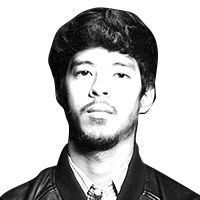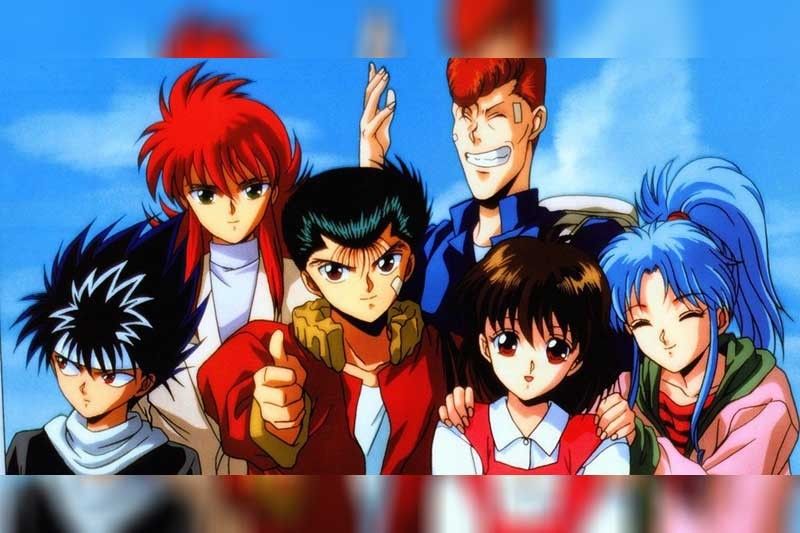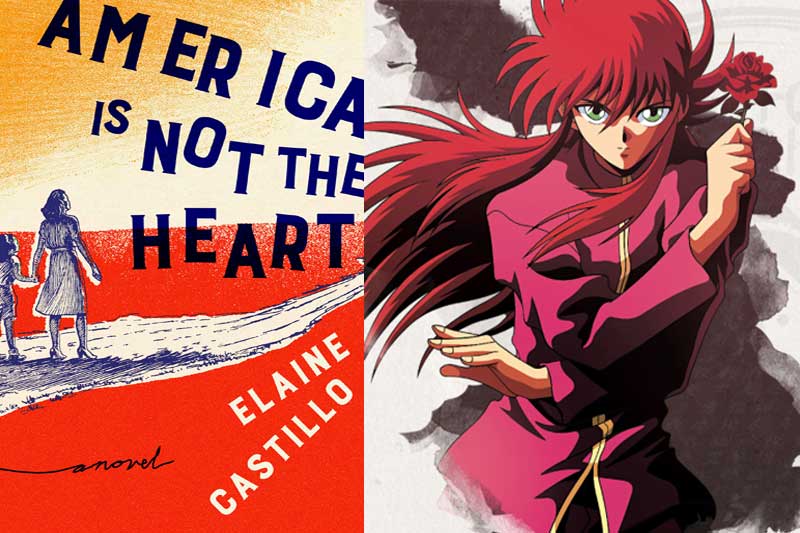Notes on Being Queer


How an anime can be the closest thing to representation when the world is hard up for identifiable characters.
There was something about Ghost Fighter — or Yu Yu Hakusho, its original Japanese title — that appealed to the queerness of my sixth-grade self. It had demons, super cool wardrobes, very cute boys who were shirtless in many episodes, and most importantly, queer (or queer-seeming) characters. The Filipino-dubbed version, already on its second wave in after a mid-’90s run, aired on free TV around 1999. It was an event for the kids in my neighborhood. We reenacted bits after school, dissected fight scenes, and debated as to which one of us could be Eugene, Alfred, Dennis or Vincent. Everyone wanted a barkada as badass as Team Urameshi.
While Sailor Moon awakened my inner homosexual during the third grade, it was anime-like Mobile Suit Gundam, Flame of Recca and Yu Yu Hakusho that gave me a chance to exist with the kids in my class and in my neighborhood. No one wants to hang out with the effeminate boy when all he talks about is Celine Dion, Song Hits and the Backstreet Boys. The pre-teen cliques in my hometown traded in teks, love interests and cartoons (I had no idea what “anime” was then). I thought Ghost Fighter — which celebrates its 25th year this year — was a blessing from the gay gods so I could be “tolerated” by my straight classmates. Watching the series enabled me to speak their language; well, one dialect of it, anyway. Ghost Fighter was the TV show. If you didn’t know Ghost Fighter — if you didn’t even have a TV — you were an outcast.
Our TV had no Cartoon Network, no Disney Channel, no Nickelodeon. Cable TV was a privilege for families like ours, subsisting from one provider’s paycheck to the next, hoping that our landlord wouldn’t hike up the rent in three month’s time. I couldn’t even watch the final episodes of Ghost Fighter at home during its first rerun. I can’t remember why. Maybe my mom or my dad wanted to watch something else. I had to settle my beef with a boy in my neighborhood who called me bakla so I could watch at their house.
It’s ironic that it took a Japanese series to give me characters that I actually wanted to be. Shows like Ang TV and G-mik were aspirational at best. They depicted the rowdy, ideal Filipino bagets that showed you how to have a good time. But I couldn’t recognize myself in any of them. They were too high up on a pedestal, too artista. Meanwhile, gay characters in Filipino TV shows, at least the ones I watched, were mostly clowns and sideshows — and these were roles that I would later take up in class because I thought it was expected of me. It wasn’t until Dennis in Ghost Fighter, an Asian character, that I found someone I could relate to. It made me think, “Hey, I want to be that guy.”
Dennis, or Kurama, is a demon fox who, in his human form, is often mistaken as female because of his flowing red locks and slightly feminine features. He was powerful, feared and mysterious. The fact that his character had brushes of femininity only made him more endearing to my li’l gay heart. He was probably genderqueer at best. I loved Dennis because he wasn’t a snarling, macho fighter who bulldozed the enemy at the ready, like Eugene or Alfred. He was intelligent, cunning, and his gorgeously meek appearance masked his killer instincts. My idea of a fully realized self was built on him — both his human and demon form.

(Left) Elaine Castillo touches on the universality of anime in her debut novel America Is Not the Heart — particularly for immigrants like her. In the book, which chronicled three generations of Filipino immigrants in the in the ’90s Bay Area, one of the character’s last holdout to being Asian was reading manga and watching anime. (Right) Dennis was probably genderqueer at best and I loved him because he wasn’t a snarling, macho fighter who bulldozed the enemy at the ready, like Eugene or Alfred.
The show also had other forays into queerness. One of the Sensui Seven, Itsuki, was clearly in love with Sensui. There was a transgender villain, Miyuki, during the Taguro tournaments. Master Jeremiah, too, proved to be a woman after all. And Jericho sucking on a pacifier? Looked like a twink with daddy issues to me.
Fandom at its earliest peak is magical. It is pure and based on fantastic notions that you, too, could actually possess super powers, powers that have been with you all along. It made you special and it made you feel important, that there was more to life than the dullness of school. In my young eyes, capable of seeing wonder, Dennis’ rose whip was as gay as a weapon could get. It turned the whip’s macho association with cowboys and ninjas on its head. With Dennis, the rose whip represented something beautiful and overlooked, yet laced with thorns that are deadly in their deceptiveness.
In hindsight, there was something about ’90s anime culture that possessed a universality unlike the TV shows of today. Elaine Castillo touches on this in her debut novel America Is Not the Heart. In the book, which chronicled three generations of Filipino immigrants in the ’90s Bay Area, one of the character’s last holdouts to being Asian was reading manga and watching anime. Castillo herself, who identifies as bi, grew up with anime such as Sailor Moon (her first awakening to queerness as well), Neon Genesis Evangelion, and Fushigi Yuugi.
“We did have Taiwanese stores where we’d buy manga or would rent tapes,” she says. “There was a kind of community of people who would translate for each other because (manga) wasn’t always translated into English and even now there’s an online community of scan-lations (laughs), and that’s how I read Naruto and stuff. So that was part of my daily life.”
She continues: “That appropriation, though, that desire to stake out spaces that felt like they were for us or by us, we had that unconscious impulse. Growing up, if you were watching television, there were shows like Baywatch that is supposedly about California. I was like, I don’t recognize that California. I don’t know who any of those people are. I didn’t grow up around that many white people, ever. But then you would watch something like Sailor Moon, and feel like ‘Ah, I get that.’ You had that kind of like unconscious sense that this is made maybe by people like us.”Growing up, ’90s western TV shows such as Friends felt foreign with their adult content. There were teen shows on Disney Channel, Cartoon Network and Nickelodeon but they were too distant and wrapped in their whiteness (it would be a few more years before my family could afford cable TV). For kids like us, there was only anime. And these were shows that were fearless in treading queer territories that our Filipino teen shows were too chicken to even dip their toes in.















